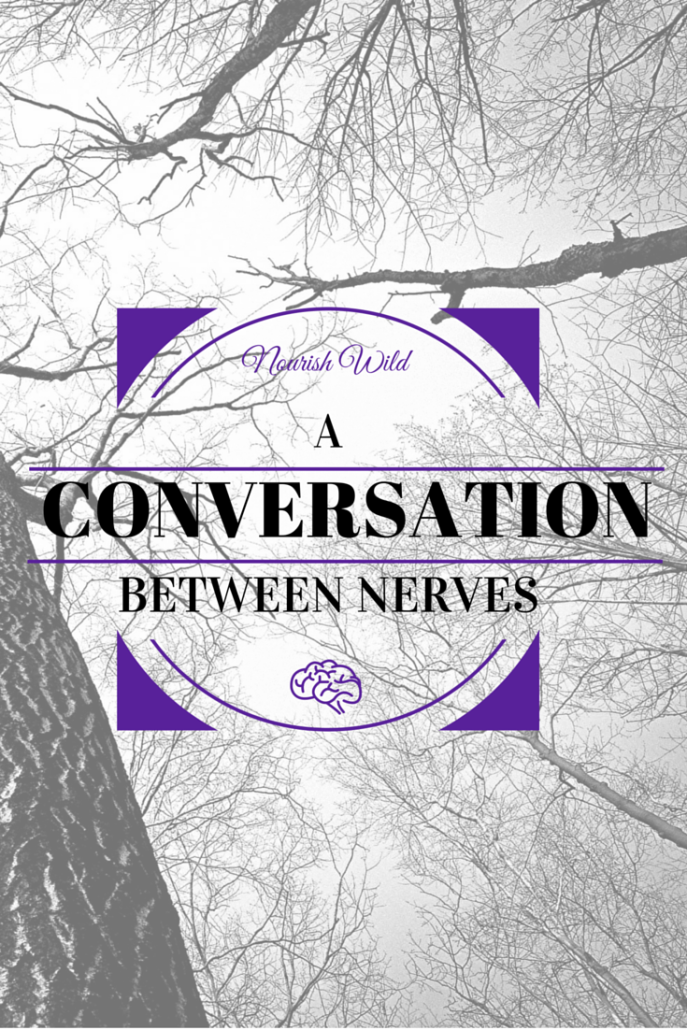A Conversation Between Nerves
A Conversation Between Nerves
In a space that is so microscopically small there still lies a vast sea of unknown territory for the life of a neurochemical. The journey from one nerve cell to the next can many times be a slippery slope and significant things can go wrong.
What is it that Murphy’s Law states again? If something can go wrong, it will go wrong. The conversation between two nerve cells as you will begin to understand can be difficult, yet extremely fascinating to people like me.
When the transfer of neurochemicals becomes disrupted, humans manifest symptoms in the form of inflammatory responses such as skin issues, digestive issues, sleep disorders, and elevated stress hormones. So how does this process get disrupted? Let’s take a deeper look at the conversation and the process should get clearer.
A nerve cell is made from proteins, and some minerals like potassium and sodium. This nerve cell has a nucleus with DNA in it to tell it which type of information to deliver to the next nerve cell during their “conversation.” Nerve cells don’t actually touch, but instead they have a small gap between them called synapses. The synaptic space between the nerve cells is the unknown territory for the neurochemicals.
When one nerve cell has a message to deliver to the next, the conversation must be initiated. The initiation begins by an electrical voltage being sent to the end of the first cell, which was caused by a change in the amount of Potassium and Sodium. The voltage forces the release of Calcium ions in order to open up the containers that hold the message. These containers are called vesicles and the chemical messengers are called neurotransmitters.
Naturally when you try to start a conversation with another person, your mouth must open to put together a string of sounds that humans call words and speech. The first nerve cell opens its mouth so to speak by moving the vesicles to the membrane and pushing out the chemical messenger in the synaptic space between the cells. These chemical messengers are many times Acetylcholine, Glutamate, or GABA. They can be other messengers too, such as Dopamine, Serotonin, or Norepinephrine.
Just because your mouth opened and you made some sounds doesn’t mean the message was communicated clearly and received well by the other person. The same thing can happen between nerve cells. Nerve cell 2 may not receive the message very clearly. The amount of chemical in the synaptic space must always be accurate and it usually is, however the conversation may have a tendency to get interrupted at the reception doors of nerve cell number 2. A certain amount of the neurochemical needs to be received in the cell receptors in order to activate the next nerve cell and prompt it to carry on the message so it can reach its final destination.
However, the process doesn’t end right there. Now that nerve cell number 1 has opened its mouth and released its message and cell number 2 has received this message, it appears that the conversation is over. That is not the case. There is almost always more information released than the second nerve cell actually needs and this is another opportunity for the conversation to be disrupted. Once the delivery has been received by the second nerve cell, the extra information still in the synaptic space must be readmitted into the first nerve cell for storage and possibly for later use. You very well may need to deliver that same message again at some point soon.
The conversation must come to a close, so the extra information needs to return to the first nerve cell. This usually happens via suction like proteins that act as transporters and vacuums the extra chemical messengers back inside the first cell. If the transporters are not produced on the cell though, the extra information cannot make it back inside the first cell and stays in the synaptic space between the two cells. This extra information is going to keep talking to nerve cell number 2 well after nerve cell 2 has received the message. Because nerve number 2 is friends with nerve number 1, nerve cell 2 will continue to let nerve cell 1 deliver the extra information. This will undoubtedly cause extra stress on nerve cell 2 and therefore cause inflammation.
If nerves get overworked as in the case of the above conversation between nerves, they begin to get burned out. When the human nervous system burns out, it will cause tremendous pain to the host organism.
The next logical point is to discuss how to get the right fuel so the nerve cells are able to communicate effectively and efficiently with each other to prevent burn out. In order to know how to prevent burn out, it would be ideal to know which food sources provide the materials to prevent burn out. This surely will help produce an efficient process of communication.
Acetylcholine is a neurotransmitter used to help the brain shut down and sleep deep enough to repair any damaged tissues throughout the rest of the body. Acetylcholine is produced with the precursor Choline, which is found in eggs. Eat those fresh pasture raised hen eggs, because they the most significant source of this protein compared to any other food sources.
Glutamate is a neurotransmitter that is used to excite every nerve cell in the assembly line to maintain the strong electrical signal the whole time allowing for proper delivery of the message to the end organ cell. Glutamate is an amino acid and can be found in most proteins, but is abundant in animal sources of protein.
Opposite of Glutamate is the neurotransmitter, GABA. GABA inhibits or prevents a message from being communicated to the next cell. Many times it is important to apply the breaks to a message we don’t like. During these times it is necessary to have the materials to prevent any furthering of a signal that is unwanted past a certain destination point. The GABA neurotransmitter can be made from a string of amino acids that all come in proper ratios in animal foods, but can be produced through the addition of a variety of plant sources.
A quick note of importance is that animal foods provide all 9 essential amino acids in a good ratio for the human body. Plant foods on the other hand provide these 9 essential amino acids plus many others in varying combinations. Due to the variance in combinations of amino acids received, the body could more easily find itself in an imbalanced state. This is why it is wise to eat meats and eggs in addition to lots of fruits, vegetables, nuts and seeds.
Another important neurotransmitter, Dopamine, delivers a “feel good” message to the next nerve cell it encounters. This “feel good” hormone keeps you coming back for more. It is heavily involved with addiction issues that many humans face on a daily basis. Dopamine is made directly from the non-essential amino acid Tyrosine. Humans don’t need to obtain Tyrosine from the diet because the body can produce it from the essential amino acid, Phenylalanine, which must come from the diet. Therefore Phenylalanine can indirectly make Dopamine.
Dopamine is unique in that it has its own roles as a neurotransmitter, but it is also used to produce Norepinephrine. Norepinephrine is a chemical compound that transmits messages regarding a sense of danger or fear surrounding the host organism. It fires the alarms throughout the body to be on high alert.
Lastly, Serotonin is another transmitter that is important to the human sleep-wake cycle. Serotonin is produced by the amino acid Tryptophan, which comes in animal foods, especially turkey. This is why Thanksgiving is my favorite holiday! Serotonin keeps the body in a continuously wake state until the sunlight goes away for the night. Serotonin is then transferred and used to produce Melatonin, which helps the brain sleep so the other chemical transmitters can perform their duties and help your body repair all of its damaged goods.
A conversation between nerves can be quite complex regarding the information that must be delivered and received from cell to cell. All parts of the process are important in order for the nervous system to perform its job optimally. This entire process doesn’t have to be complex. When humans get addicted to certain detrimental habits is when the information process gets complex. Keep it simple by eating the right whole foods that provide the raw materials for the chemical messages to be delivered effectively. If you treat your connections like you did your favorite toy as a child, then your connections will treat you with respect manifesting in beautiful health.
Eventually you’ll need to have “the talk” with yourself. What kinds of conversations are your nerves having every day?


